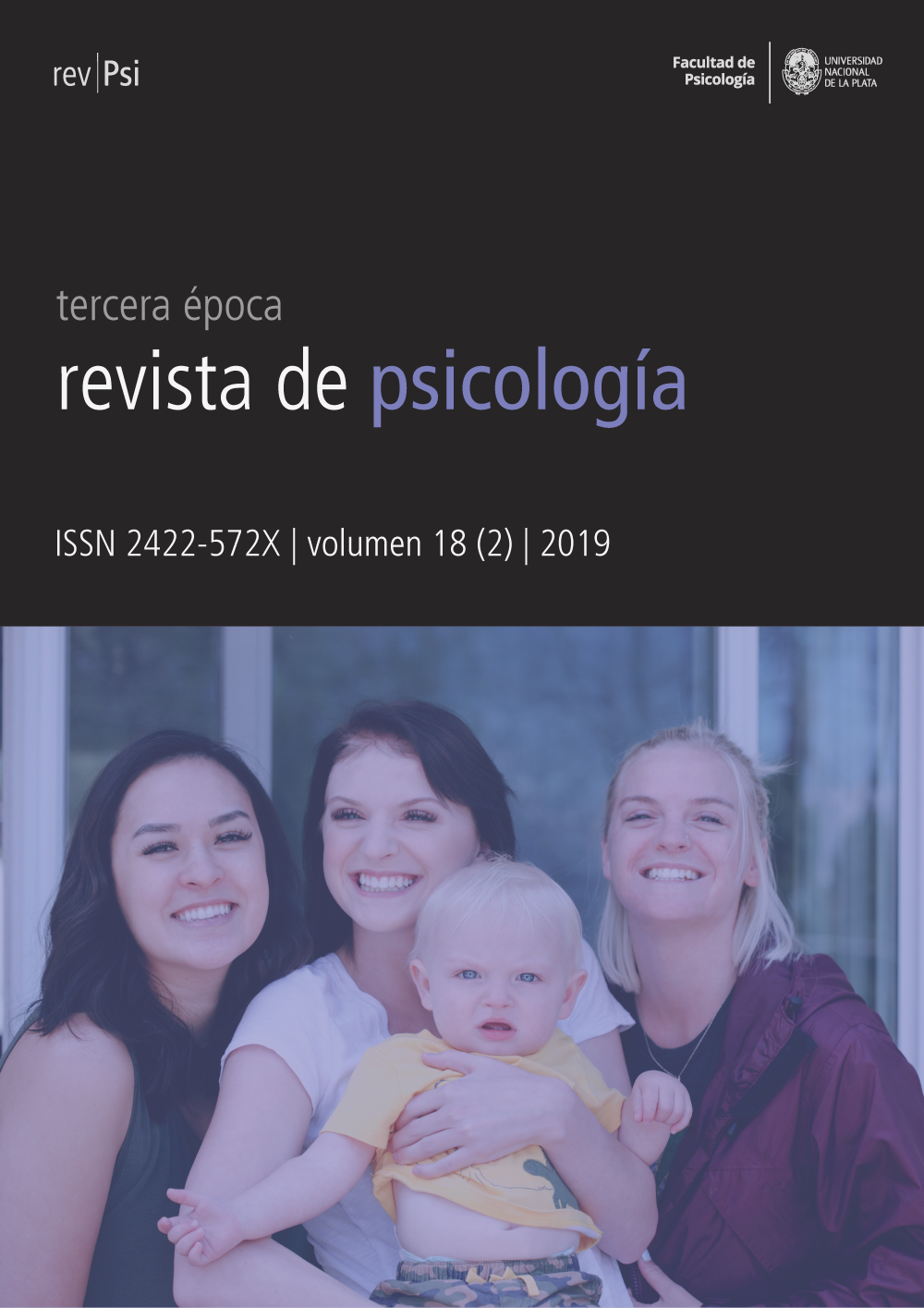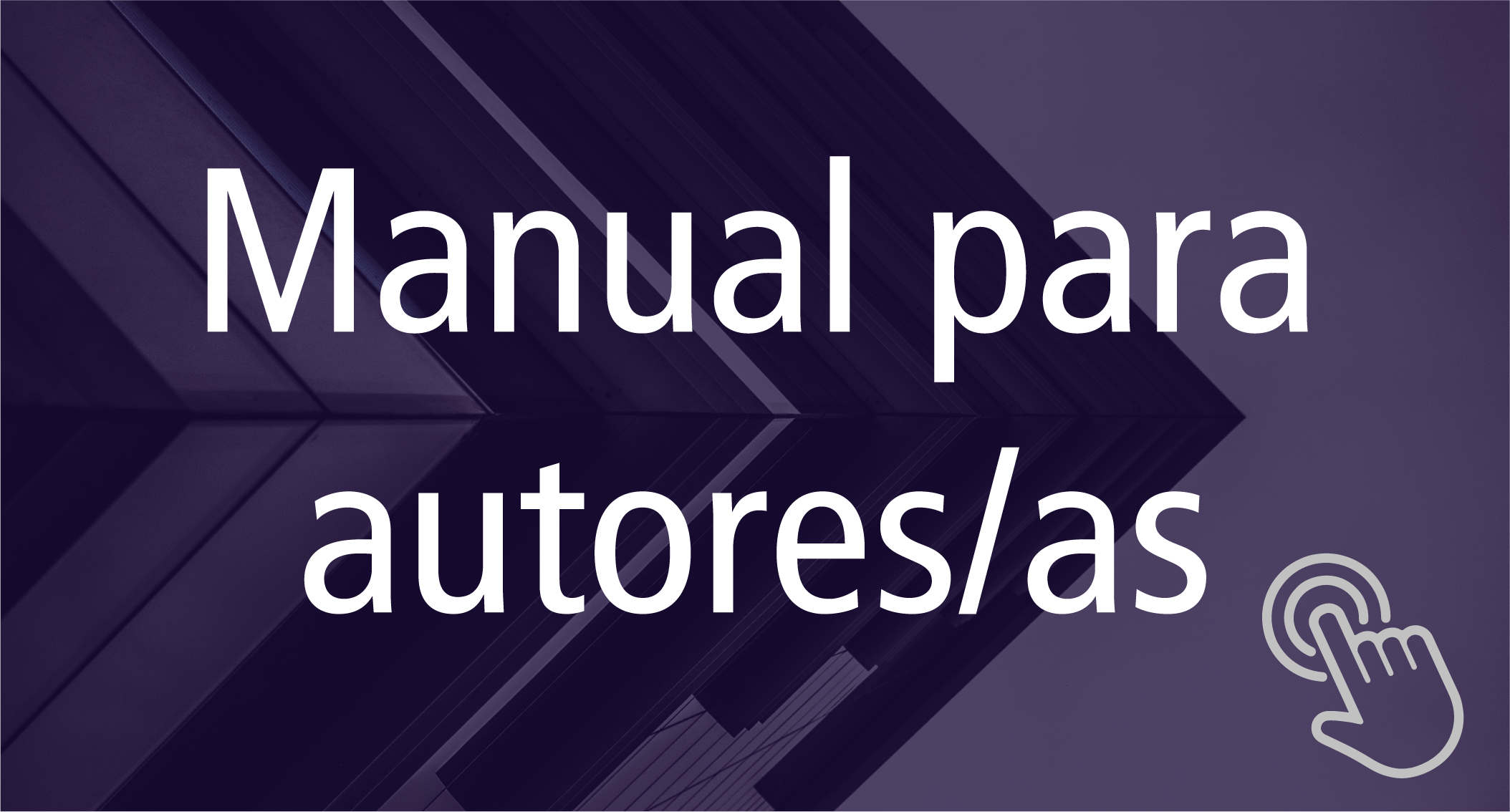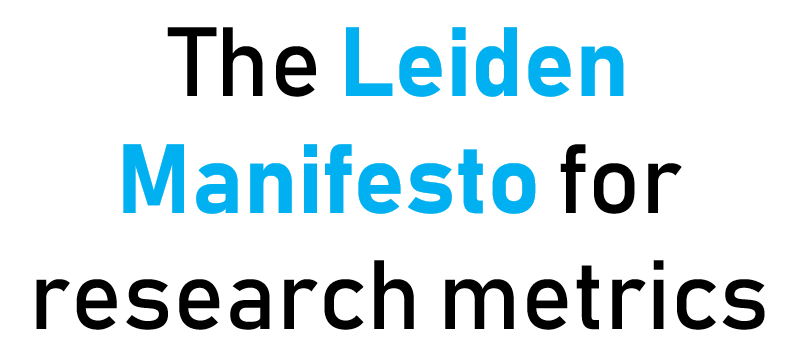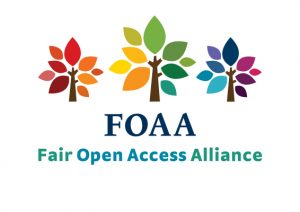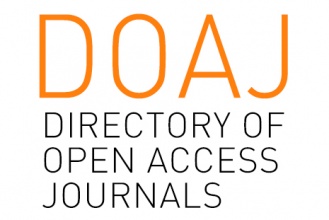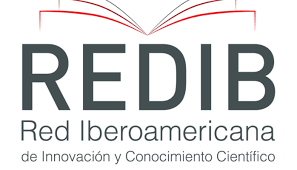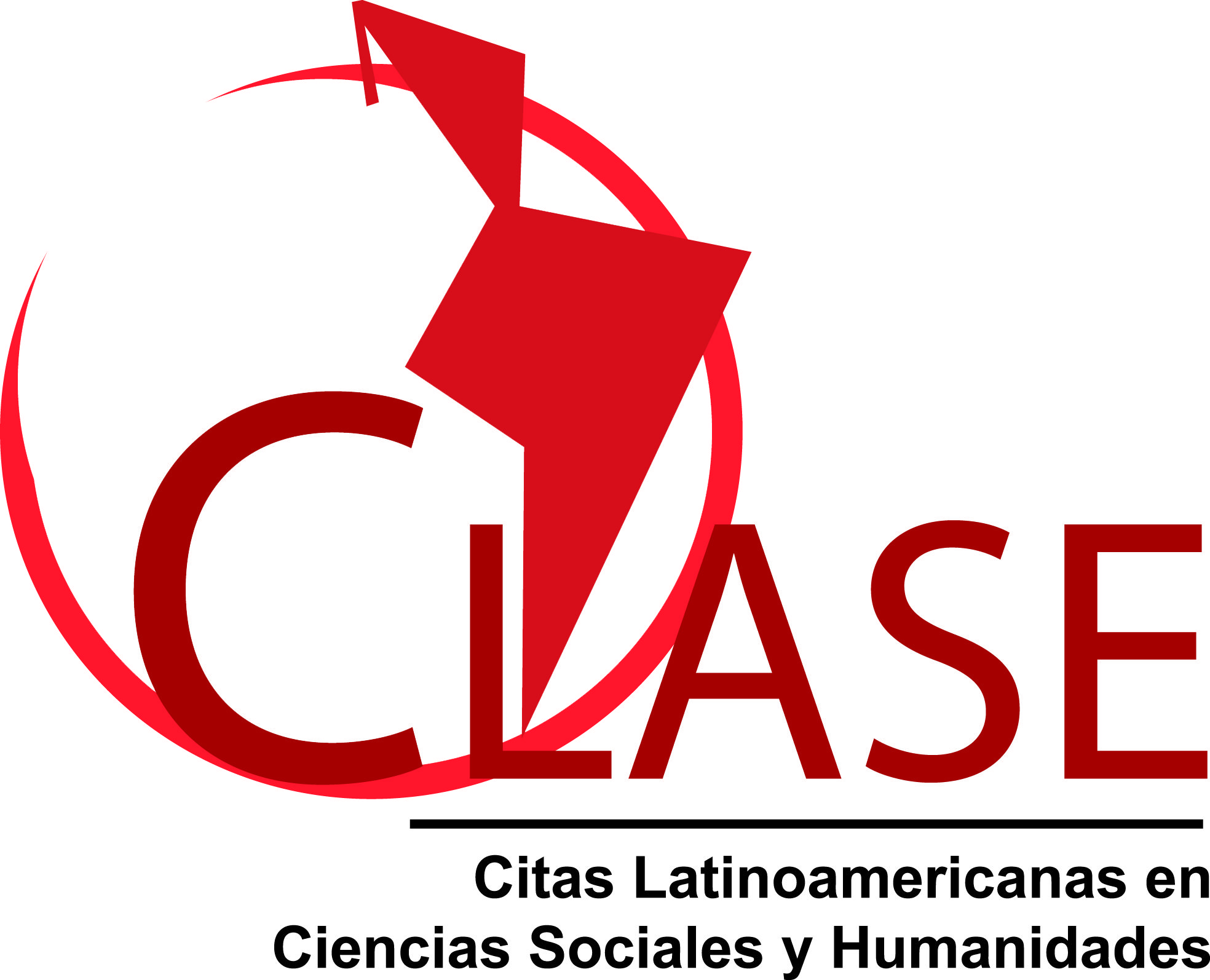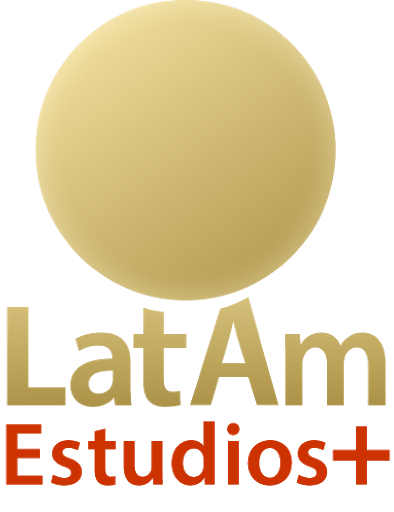Las mascotas en el sistema familiar. Legitimidad, formación y dinámicas de la familia humano-animal
DOI:
https://doi.org/10.24215/2422572Xe036Palabras clave:
animal de compañía, dinámica familiar, familia, mascotas, teoría sistémicaResumen
Aunque la tenencia de mascotas se ha intensificado, no se trata de un fenómeno del posthumanismo, sino que proviene de la prehistoria. Los recientes incrementos en esta práctica parecen depender de un cambio actitudinal general hacia los animales. Actualmente, las mascotas aparecen como una característica omnipresente en vida la familiar occidental, y la Teoría Sistémica resulta una perspectiva destacable para su estudio. Convertir animales en familia implica un proceso bidireccional donde estos tienen un rol activo. Las mascotas desempeñan funciones compartidas y particulares, adecuándose a las demandas de cada etapa familiar y contribuyendo a las dos funciones básicas de las familias: mantener la cohesión favoreciendo el desarrollo. Los animales tienen, además, un rol estabilizante y dinámico, siendo particularmente importantes durante las crisis, y pudiendo desestabilizar el sistema al ausentarse. Finalmente, se brindan recomendaciones para que los clínicos puedan incluir a las mascotas en el trabajo con familias multiespecies.
Referencias
Albert, A. y Bulcroft, K. (1988). Pets, families, and the life course. Journal of Marriage and the Family, 50(2), 543-552. https://doi.org/10.2307/352019
Allen, K. (1995). Coping with life changes and transitions: The role of pets. Interactions, 13(3), 5-8.
Allen, K. (2002). Cardiovascular reactivity and the presence of pets, friends, and spouses: The truth about cats and dogs. Psychosomatic Medicine, 64(5), 727-739. https://doi.org/10.1097/01.PSY.0000024236.11538.41
American Veterinary Medical Association [AVMA]. (2018). Pet ownership & demographic (2017-18). Recuperado a partir de https://www.avma.org/News/PressRoom/Pages/AVMA-releases-latest-stats-on-pet-ownership-and-veterinary-care.aspx
Augliere, B. (2016). Debate. Recuperado a partir de http://naturenews.disqus.com/
Beck, L. y Madresh, E. A. (2008). Romantic partners and four-legged friends: An extension of attachment theory to relationships with pets. Anthrozoös, 21(1), 43-56. https://doi.org/10.2752/089279308X274056
Belk, R. W. (1996). Metaphoric relationships with pets. Society & Animals, 4(2), 121-145. https://doi.org/10.1163/156853096X00115
Botigué, L. R., Song, S., Scheu, A., Gopalan, S., Pendleton, A. L., Oetjens, M., … Veeramah, K. R. (2017). Ancient European dog genomes reveal continuity since the Early Neolithic. Nature Communications, 8(1), 16082. https://doi.org/10.1038/ncomms16082
Bovisio, M., Cicuttin, G., Fracuelli, M. C., González, B. B., Lencinas, O. E., Mestres, N., … Marcos, E. R. (2004). Características de la convivencia humano-animal en la CABA y su relación con la prevención de zoonosis. Buenos Aires: Instituto de Zoonosis Luis Pasteur.
Bowen, M. (1966). The use of family theory in clinical practice. Comprehensive Psychiatry, 7(5), 345-374. https://doi.org/10.1016/S0010-440X(66)80065-2
Bowen, M. (1978/1993). Family therapy in clinical practice. Maryland: Jason Aronson.
Bowlby, J. (1969/1998). El apego y la pérdida 1: El apego. Barcelona: Paidós.
Cain, A. O. (1985). Pets as family members. Marriage & Family Review, 8(3-4), 5-10.
Ceberio, M. R. (1994). Ciencias modernas, complejidad y psicoterapia. En G. Nardone y P. Watzlawick (Eds.), Terapia breve, filosofía y arte (pp. 13-34). Barcelona: Herder.
Ceberio, M. R. (2010). La nave de los locos. Buenos Aires: Teseo.
Ceberio, M. R. (2015). John Bowlby: Del psicoanálisis a la etología y la cibernética. En J. Bowlby, Vínculos afectivos (6.ª ed., pp. 1-8). Madrid: Morata.
Ceberio, M. R. (2017). El genograma. Quién soy y de dónde vengo. Madrid: Morata.
Ceberio, M. R. y Serebrinsky, H. (2011). Dentro y fuera de la caja negra. Buenos Aires: Psicolibro.
Charles, N. (2014). ‘Animals just love you as you are’: Experiencing kinship across the species barrier. Sociology, 48(4), 715-730. https://doi.org/10.1177/0038038513515353
Cohen, S. P. (2002). Can pets function as family members? Western Journal of Nursing Research, 24(6), 621-638. https://doi.org/10.1177/019394502320555386
Covert, A. M., Whiren, A. P., Keith, J. y Nelson, C. (1985). Pets, early adolescents, and families. Marriage & Family Review, 8(3-4), 95-108. https://doi.org/10.1300/J002v08n03_08
Cyrulnik, B. (1999). Autobiografía de un espantapájaros. Barcelona: Gedisa.
Díaz Videla, M. (2015). El miembro no humano de la familia: Las mascotas a través del ciclo vital familiar. Revista Ciencia Animal, 9, 83-98.
Díaz Videla, M. (2017). Antrozoología y la relación humano-perro. Buenos Aires: iRojo.
Díaz Videla, M. y Olarte, M. A. (2016). Animales de compañía, personalidad humana y los beneficios percibidos por los custodios. PSIENCIA. Revista Latinoamericana de Ciencia Psicológica, 8(2), 1-19. https://doi.org/10.5872/psiencia.v8i2.201
Díaz Videla, M. y Olarte, M. A. (2018). La psicología del vínculo humano-animal. Aportes de la psicología a la antrozoología y viceversa. En M. Díaz Videla y M. A. Olarte (Eds.), Antrozoología (pp. 1-21). Buenos Aires: Akadia.
Duncan, S. y Smith, D. (2006). Individualisation versus the geography of ‘new’ families. Londres: Families & Social Capital ESRC Research Group, South Bank University.
European Pet Food Industry Federation [FEDIAF]. (2017). Facts and figures. Recuperado a partir de http://www.fediaf.org/who-we-are/european-statistics.html
Falicov, C. (1991). Contribuciones de la sociología de la familia y de la terapia familiar al “esquema del desarrollo familiar”: Análisis comparativo y reflexiones sobre las tendencias futuras. En C. Falicov (Ed.), Transiciones de la familia (pp. 31-95). Buenos Aires: Amorrortu.
Faver, C. y Cavazos, A. (2008). Love, safety, and companionship: The human-animal bond and latino families. Journal of Family Social Work, 11(3), 254-271. https://doi.org/10.1080/10522150802292350
Galton, F. (1865). The first steps towards the domestication of animals. Transactions of the Ethnological Society of London, 3, 122-138. https://doi.org/10.2307/3014161
GfK. (2016). Pet ownership. Global GfK Survey. Recuperado a partir de https://www.gfk.com/fileadmin/user_upload/country_one_pager/AR/documents/Global-GfK-survey_Pet-Ownership_2016.pdf
Gimeno Collado, A. (1999). La familia: El desafío de la diversidad. Barcelona: Ariel.
Gray, P. B. y Young, S. M. (2011). Human–pet dynamics in cross-cultural perspective. Anthrozoös, 24(1), 17-30. https://doi.org/10.2752/175303711X12923300467285
Guéguen, N. y Ciccotti, S. (2008). Domestic dogs as facilitators in social interaction: An evaluation of helping and courtship behaviors. Anthrozoös, 21(4), 339-349. https://doi.org/10.2752/175303708X371564
Herzog, H. (2012). Los amamos, los odiamos y... Los comemos: Esa relación tan especial con los animales. Barcelona: Kairós.
Hirschman, E. C. (1994). Consumers and their animal companions. Journal of Consumer Research, 20(4), 616-632. https://doi.org/10.1086/209374
Hodgson, K. y Darling, M. (2011). Pets in the family: Practical approaches. Journal of the American Animal Hospital Association, 47(5), 299-305. https://doi.org/10.5326/JAAHA-MS-5695
Johnson, A. y Bruneau, L. (2019). Pets and relationships: How animals help us understand ourselves and our connections with others. En L. Kogan y K. Blazina (Eds.), Clinician’s guide to treating companion animal issues (pp. 173-191). Londres: Academic Press.
Kerr, M. y Bowen, M. (1988). Family evaluation. New York: Norton and Company.
Kim, J., LaRose, R. y Peng, W. (2009). Loneliness as the Cause and the Effect of Problematic Internet Use: The relationship between internet use and psychological well-being. CyberPsychology & Behavior, 12(4), 451-455. https://doi.org/10.1089/cpb.2008.0327
Leow, C. (2018). It’s not just a dog: The role of companion animals in the family’s emotional system (Tesis de maestría). University of Nebraska, Estados Unidos.
McConnell, A. R., Brown, C. M., Shoda, T. M., Stayton, L. E. y Martin, C. E. (2011). Friends with benefits: On the positive consequences of pet ownership. Journal of Personality and Social Psychology, 101(6), 1239-1252. https://doi.org/10.1037/a0024506
McGoldrick, M., Gerson, R. y Petry, S. (2008). Genograms: Assessment and intervention. New York: W. W. Norton & Company, Inc.
Minuchin, S. (1977). Familias y terapia familiar. Barcelona: Juan Granica.
Minuchin, S. y Fischman, H. C. (2004). Técnicas de terapia familiar. Buenos Aires: Paidós.
Nagasawa, M., Mitsui, S., En, S., Ohtani, N., Ohta, M., Sakuma, Y., … Kikusui, T. (2015). Oxytocin-gaze positive loop and the coevolution of human-dog bonds. Science, 348(6232), 333-336. https://doi.org/10.1126/science.1261022
O’Haire, M. (2010). Companion animals and human health: Benefits, challenges, and the road ahead. Journal of Veterinary Behavior, 5(5), 226-234. https://doi.org/10.1016/j.jveb.2010.02.002
Palmer, R. y Custance, D. (2008). A counterbalanced version of Ainsworth’s Strange Situation Procedure reveals secure-base effects in dog–human relationships. Applied Animal Behaviour Science, 109(2-4), 306-319. https://doi.org/10.1016/j.applanim.2007.04.002
Pittman, F. (1990). Momentos decisivos: Tratamiento de familias en situaciones de crisis. Buenos Aires: Paidós.
Poresky, R. H. y Hendrix, C. (1990). Differential effects of pet presence and pet-bonding on young children. Psychological Reports, 67(1), 51-54. https://doi.org/10.2466/PR0.67.5.51-54
Power, E. (2008). Furry families: Making a human–dog family through home. Social & Cultural Geography, 9(5), 535-555. https://doi.org/10.1080/14649360802217790
Prato-Previde, E., Spiezio, C., Sabatini, F. y Custance, D. M. (2003). Is the dog-human relationship an attachment bond? An observational study using Ainsworth’s strange situation. Behaviour, 140(2), 225-254. https://doi.org/10.1163/156853903321671514
Roseneil, S. y Budgeon, S. (2004). Cultures of intimacy and care beyond ‘the family’: Personal life and social change in the early 21st century. Current Sociology, 52(2), 135-159. https://doi.org/10.1177/0011392104041798
Sable, P. (2013). The pet connection: An attachment perspective. Clinical Social Work Journal, 41(1), 93-99. https://doi.org/10.1007/s10615-012-0405-2
Sanders, C. R. (1998). The canine-human «with»: Dogs, people, and public interaction. International Society for Anthrozoology, 16(1), 11-15.
Schvaneveldt, P. L., Young, M. H., Schvaneveldt, J. D. y Kivett, V. R. (2001). Interaction of People and Pets in the Family Setting: A life course perspective. Journal of Teaching in Marriage & Family, 1(2), 34-51. https://doi.org/10.1300/J226v01n02_03
Serpell, J. (1989). Pet-keeping and animal domestication: A reappraisal. Londres: Unwin Hyman.
Serpell, J. (1996). In the company of animals: A study of human-animal relationships. Cambridge: Cambridge University Press.
Serpell, J. y Paul, E. (2011). Pets in the family: An evolutionary perspective. En C. A. Salmon y T. K. Shackelford (Eds.), The Oxford handbook of evolutionary family psychology (pp. 298-309). Oxford: Oxford University Press.
Simon, F. B., Stierlin, H. y Wynne, L. C. (1988). Vocabulario de terapia familiar. Buenos Aires: Gedisa.
Simpson, M. G. y Keulyan, G. (2018). El perro como tutor de resiliencia en procesos de orientación y de TAA. En M. Díaz Videla y M. A. Olarte (Eds.), Antrozoología, multidisciplinario campo de investigación (pp. 58-71). Buenos Aires: Akadia.
Smart, C. y Shipman, B. (2004). Visions in monochrome: Families, marriage and the individualization thesis. The British Journal of Sociology, 55(4), 491-509. https://doi.org/10.1111/j.1468-4446.2004.00034.x
Turner, W. G. (2005). The role of companion animals throughout the family life cycle. Journal of Family Social Work, 9(4), 11-21. https://doi.org/10.1300/J039v09n0402
Vaillant, G. (2012). Triumphs of experience. The men of the Harvard Grant Study. Cambridge: Belknap Press.
Valadez Azúa, R. (2000). El origen del perro, primera parte (entre el lobo y el perro). Revista AMMVEPE, 11(3), 75-84.
Walsh, F. (2009). Human-Animal Bonds II: The role of pets in family systems and family therapy. Family Process, 48(4), 481-499. https://doi.org/10.1111/j.1545-5300.2009.01297.x
Zilcha-Mano, S., Mikulincer, M. y Shaver, P. R. (2011). An attachment perspective on human–pet relationships: Conceptualization and assessment of pet attachment orientations. Journal of Research in Personality, 45(4), 345-357. https://doi.org/10.1016/j.jrp.2011.04.001
Zilcha-Mano, S., Mikulincer, M. y Shaver, P. R. (2012). Pets as safe havens and secure bases: The moderating role of pet attachment orientations. Journal of Research in Personality, 46(5), 571-580. https://doi.org/10.1016/j.jrp.2012.06.005
Descargas
Publicado
Número
Sección
Licencia
![]()
Los autores/as que publiquen en esta revista aceptan las siguientes condiciones:
- Los autores/as conservan los derechos de autor y ceden a la revista el derecho de la primera publicación, con el trabajo registrado con la licencia de atribución de Creative Commons, que permite a terceros utilizar lo publicado siempre que mencionen la autoría del trabajo y a la primera publicación en esta revista.
- Los autores/as pueden realizar otros acuerdos contractuales independientes y adicionales para la distribución no exclusiva de la versión del artículo publicado en esta revista (p. ej., incluirlo en un repositorio institucional o publicarlo en un libro) siempre que indiquen claramente que el trabajo se publicó por primera vez en esta revista.
- Se permite y recomienda a los autores/as a publicar su trabajo en Internet (por ejemplo en páginas institucionales o personales) antes y durante el proceso de revisión y publicación, ya que puede conducir a intercambios productivos y a una mayor y más rápida difusión del trabajo publicado (veaThe Effect of Open Access).

